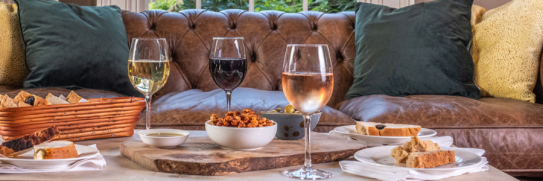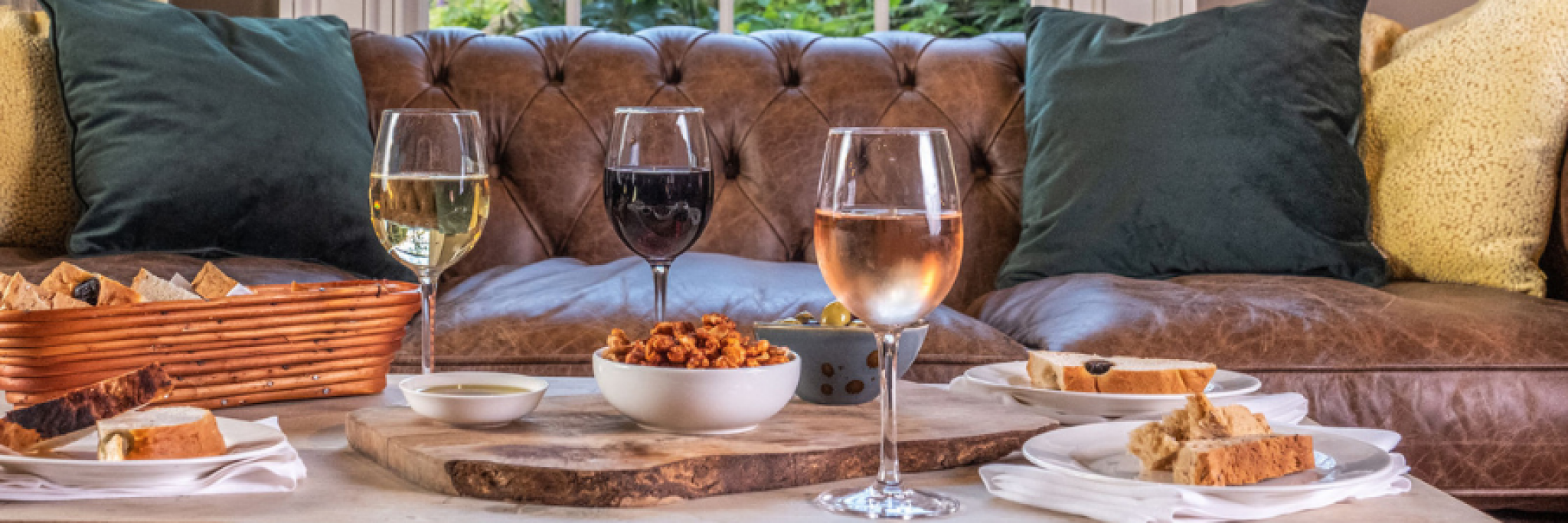The added value of working with Peter Graham Wines, including expertise in putting together a wine list, wine training, and creating an experience for your customers.
Peter Graham Wines prides itself in being much more than just a wine supplier per se - as important as that aspect is. In today’s marketplace you need a supplier that delivers high quality wines, of course, but also who works as a true business partner and helps build your liquor business via an inventive wine list, staff training, and engaging with your own clients to give them a memorable experience. This includes making you aware of wine trends, key aspect of information which are important to the end drinker, and innovative ways of presenting and promoting wine in general.
Let’s look at some aspects, suggestions, and ideas to consider, plus understanding about information on wine labels which is important these days to many drinkers.
The Wine List Itself
Historically most wine lists in the UK were constructed on a geographical basis, particularly when there was a much stronger bias than today towards Europe. However, in recent years there has been a significant shift towards wine lists being paginated by style – something which I personally prefer.
In most basic terms a good list needs to be easy to navigate for your customers, attractively and interestingly presented, and above all a good sales and PR tool for your business. Practically staff cannot be on hand 24/7 to help advise and influence sales so a well-designed list will indeed be a “silent salesperson”.
Clearly the starting point for most people will be the basic styles – by that sparkling, still white, rosé, red and what they are budgeting to spend on a glass or bottle.
Many people will buy by grape variety too so this needs to be covered – just think of the success of Malbec from Argentina and Pinot Grigio from Italy in the last 10 years or so. Popular regions also need coverage – eg Rioja (which has almost become a brand name to many consumers). But overall, I think people these days very much consider the style of the wine above all. And, very importantly, what they are eating.
If you still prefer to paginate your list by geography (country) there is nothing wrong with this approach, but I would recommend that each country has a banner and copy introducing the wines and their styles for each section. This also allows you to highlight personal or house favourites at the same time. Peter Graham Wines are on hand to help with these headings if you require some assistance.
If you wish to structure by style and category, then please find some suggestions and approaches below.
Wine By The Glass Selection
Getting this right is very important – both commercially for you but also to promote your image and reputation – it is often the first section a reader comes to and sets the scene for the whole list. It also allows you to showcase your own establishment’s personality and get engaged with the customer through the wording you use as well as the selection itself.
An important consideration is that these wines should not simply be the cheapest. Clearly, they need to be competitively priced, and you need to consider the most popular styles, regions, and grape varieties. But you can also be more adventurous and trial some more unusual wines, particularly if you have good quality preservation systems (please see below).
As well as mixed glass size options (125/175ml for example) I would also strongly recommend deploying 500ml carafes. This size works well for two people over a meal when a full bottle may be too much. It also requires only a quick decant and wastage is minimal (two bottles make 3 carafes).
Also, storage systems are now available (vacu-vin, verre de vin etc) which mean you can be more adventurous with listings and still manage ullage issues. If you use or wish to consider a Coravin (gas blanket) system, then this allows you to offer more expensive and finer wines by the glass with minimal ullage risk. This is an important consideration for people who due to drink/drive or health issues wish to drink just one glass of wine so will happily trade up to something more special in this case.
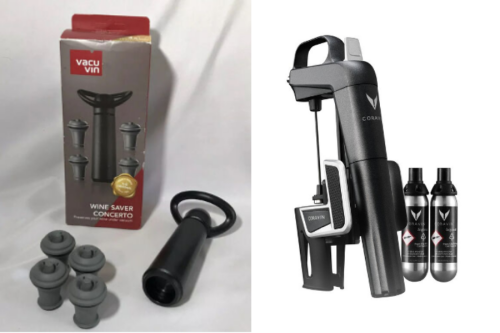
Designing A Wine List Itself
Sparkling Wines
- I would always advise to separate out Champagne from other sparklers under two headings and here sub section further by colour (white/rosé), non-vintage and vintage subject to just how many lines you include of course. Then create a section for “Other Sparkling Wines”.
White Wines – with sub sections suggestions
- Dry, crisp, clean, lighter bodied and refreshing – examples Muscadet, Italian Pinot Grigio, Chablis
- Bright, fruity, and aromatic – examples NZ Marlborough Sauvignon Blanc, German Trocken Riesling, Argentine Torrontés
- Fuller bodied, richer, and oaked – examples include most White Burgundy, New World Chardonnays, South African oaked Chenin Blanc
Rosé Wines
Usually, a section on its own but would suggest listing by increasingly levels of body if you have a number in this category
Red Wines
- Lighter Bodied, fruity, and easy drinking – examples include Beaujolais, Valpolicella, several Pinot Noirs, Austrian Zweigelt. These are also the style of red wine you can offer cooled down in the summer months
- Medium bodied, rounded and savoury – examples include North Rhône Syrah, Côte-du- Rhône, Rioja Crianza, many Merlot based wines
- Dry, full bodied, rich and tannic – examples include Barolo, many Cabernet Sauvignon based wines, Argentine Malbec, Barossa Shiraz
Dessert & Fortified Wines – I am a strong advocate of these being highlighted on a list – even if you have just one sweet wine. Everyone will have a Port, for example, and these sorts of wines become more important in the autumn and winter and obviously at Christmas.
If you have a selection pour dessert wines by increasing levels of sweetness and body and say so in the category heading.
Clearly, this design and approach, overall, breaks down the whole geographical structure of a list which I really don’t think is an issue anymore. If someone buys by origin and/or grape variety, you still include this information within the style categories.
And not unimportantly, it removes the need to supply a tasting note for every wine on the list. It also gives you the option to highlight certain stand out, or favourite wines, within the category heading – eg a “House Favourite”.
Menus with Food and Wine Matching
This is becoming more fashionable with certain outlets where they specifically recommend and list wines by the glass by each course. If this suits your operation and approach then I am all for it – it gives you the chance to highlight favourite wines off your list, reinforces your overall wine by the glass offering, and can be regularly changed and refreshed.
Seasonal Changes to the Wine List
Kitchens often review menus by seasons – ie Spring, Summer, Autumn, Winter – and this also gives you the opportunity to finesse and refresh your wine list in sync. Changes can be subtle (not necessarily wholesale) – eg increase “crisper white wines and rosés” in the summer, increase the red selection in the autumn and winter, highlight Port at Christmas etc.
Half Bottles?
I feel that if you get your Wine by the Glass selection right, and include the 500ml carafe option, then the need for this size of bottle is redundant. The one exception maybe to offer a dessert wine by the ½ bottle if you were listing one in this size (many come in this size anyway).
Important Additional Information and Symbols - what they mean and why they are important to customers these days
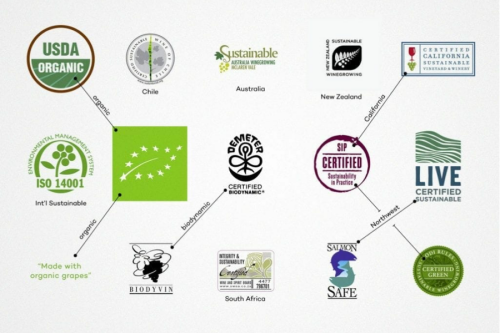
The following are important criteria for an increasing number of drinkers and should be included in any modern day, professional list (Peter Graham Wines web site is excellent in itemising these sorts of detail just click on the Wines Tab and scroll down on the left of the page and the page opens with all the info you need by wine)
- % abvs (alcohol by volume) – legally required and easily accessed off the label this information helps people understand the volume of alcohol and “units” they may be drinking in a meal/evening
- A “Unit” is not a glass of wine but relates to the % volume of alcohol in a bottle. It is calculated by the litre. So, as a bottle is ¾ of a litre; take the %abv - say 12% - and multiply it by ¾ and you get 9 units in the bottle
- Organic (Symbol O) – these wines must carry a fully accredited organic reference to an authorised body, and this should be clearly marked on the label as a symbol from an accredited body
- Biodynamic (Bio) – in effect “supercharged” organics - one winemaker once describe it to me as “Organics meets Harry Potter”
- Suitable for Vegans (Ve) – for both vegans and vegetarians this information is very important. It relates to the use of ingredients in certain process of making and finishing wine. Some have an animal base which is an issue for both groups, whilst some may be dairy based which would be OK for a vegetarian but not a vegan. Again, the Peter Graham Wine web site is excellent for confirming which wines are and are not. You can scroll down on their web page to the Ve and V section and open the tabs and links.
- Suitable for Vegetarians (V) – please see above - in effect anything suitable for Vegans will be suitable for Vegetarians but not necessarily vice versa
- Allergens - this is a very important aspect, and all wine labels are required by law to put the term “contains sulphites” on the label. This relates mainly to the use of Sulphur Dioxide as a preservative and antiseptic in wines, which can cause a reaction (headache) for certain people. As with all allergens - food included as you well know - this has serious health implications. Again, please click down the left-hand side of the PGW wine list site to find all the information you need on every wine
- Sustainability - again increasingly important area and covers such aspects as water management on the estate, to recycling of waste and used materials, lighter glass bottles, reduced use of utilities in general, “carbon neutrality”, etc. South African wines have a formal seal which is found on the neck of the bottle to highlight this issue. This is not just driven by cost saving but a philosophical outlook - and these producers should be supported. This also covers areas such as “Ethics and Integrity” which include the care and wellbeing of workers and employees - again something that is big in South Africa
- “Vintage Changes” – if you are itemising the vintage year, it is worth covering yourself by saying “that in the event of a stated vintage becoming exhausted a commensurate quality year will be offered” – some consumers can be quite “touchy” about vintage changes; it also helps to prolong the print run for your list.
Overall Style and Design Approach
Many lists these days take a more relaxed approach and try to engage the drinker through anecdotes and humorous angles, maybe including visual aids and quotations for example. This is worth considering without trivialising your list. Clearly you need to be sure that if you go down this route it is sympathetic with your operational style.
Below are just a few examples I have come across over time on various lists under various “banners”. You may though need to think about copyright issues and gaining permission to use, but many like these are on the open market so to speak.
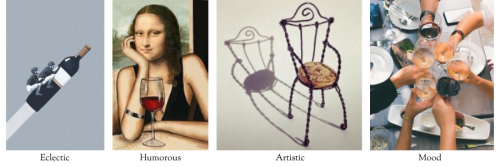
I have seen wine lists which use these – again you need to be sure they match your overall style as an operation and client base. Done well, they can assist in making the whole list feel more relaxed and less formal. Please find a sample selection below to give you a feel for these.
- Today 61 different countries in the world produce wine
- The custom of bumping glasses with a “cheers” greeting came from old Rome where they used this method to make sure no one is trying to poison the other (bumping glasses makes the drink spill from one cup to the other). This tradition started even earlier in ancient Greece – where the host was to drink the first cup of wine to show his guests that he does not intend to poison them
- Which country drinks the most wine per capita? The Vatican! With 74 litres per person per year, equivalent to about 100 bottles per year. Second is France at 53 litres per person, followed by Portugal and Italy. China drinks the largest volume – especially red wine, as this colour is seen as being lucky in the country
- There are 49 million bubbles in a 750ml bottle of Champagne, give or take a few, as calculated by scientist Bill Lembeck, based on 5.5 atmospheres of pressure, when stored at 12-15 degrees Celsius
- The French town of Châteauneuf-du-Pape is best-known for its fine red wine, but it sounds like the locals might have been enjoying the fruits of their labours a little too much. For the last 62 years, a law has prohibited the “flying over, landing, or taking off of flying saucers” in the area – and the mayor of the town has refused to overturn it. Former mayor Lucien Jeune issued the ban, which reads: “Any aircraft, known as flying saucer or flying cigar, which should land on the territory of the community will be immediately held in custody”. No police officers in his constituency have ever had to arrest any aliens, but that doesn’t mean that current mayor will drop the law anytime soon. The 1954 law was established after a producer in the region said he had seen two figures that looked like “deep sea divers” emerging from a “cigar-shaped” spaceship, which landed in the vineyard!
________________________________
“This wine would go well with fish – especially Codswallop” – Malcolm Gluck wine writer
“Wine is one of the most civilized things in the world and one of the most natural things of the world that has been brought to the greatest perfection, and it offers a greater range for enjoyment and appreciation than, possibly, any other purely sensory thing.” Ernest Hemingway
“Wine can be a better teacher than ink, and banter is often better than books.” Stephen Fry
“Wine is sunlight, held together by water.” Galileo
“I prefer to take a bath because it is harder to drink wine in the shower” Tommy Cooper
Of wine ... “I would rather have a bottle in front of me than a frontal lobotomy” Anon
“A bottle of wine contains more philosophy than all the books in the world.” Louis Pasteur
Wine Training
Finally, it should go without saying that training your staff about your wine list - and wine in general -is essential. Very importantly you do not need to be a wine expert to be well trained in wine.
Peter Graham Wines - including myself - have all the resources and expertise to supply dedicated, training courses which delivery precisely the level and focus of knowledge you and your staff require. These can be tailor made bespoke, or formal Wine & Spirit Education Trust courses. Above all, designed to be at exactly the right level you require for your business.
The benefits can be seen quickly and measurably in increased levels of confidence in members of staff and above all increased revenue and profit returns for your business from sales of wine.
Please do discuss with your local PGW sales representative or call the PGW head office and we will get back to you with suggestions and/or a formal proposal.
Summary
More than ever people are going out for an experience these days and the investment made in the food and wine offering will not only increases your revenue and profit but build a reputation which encourages more customers and greater sales through both informal and formal social networking.

